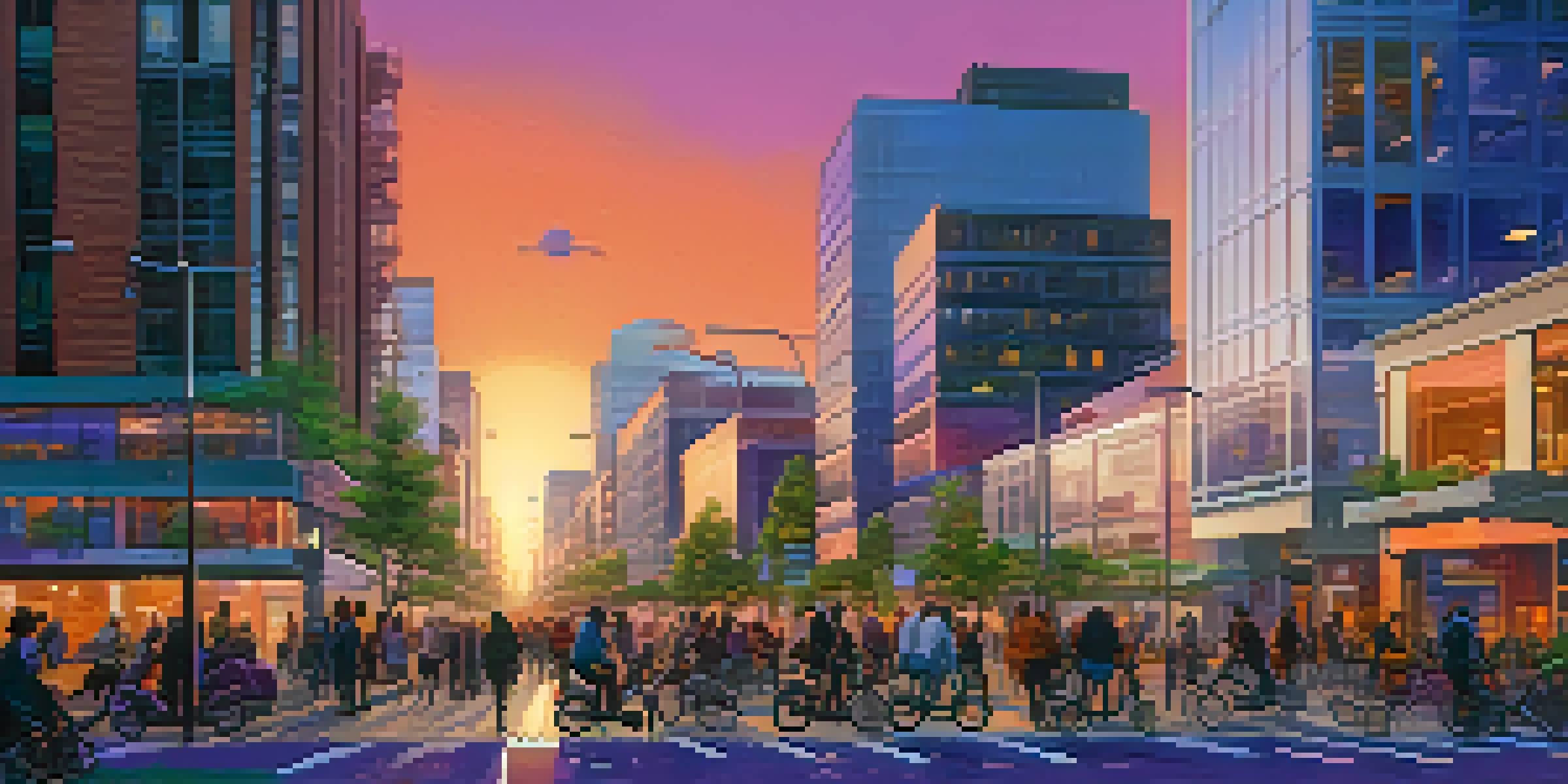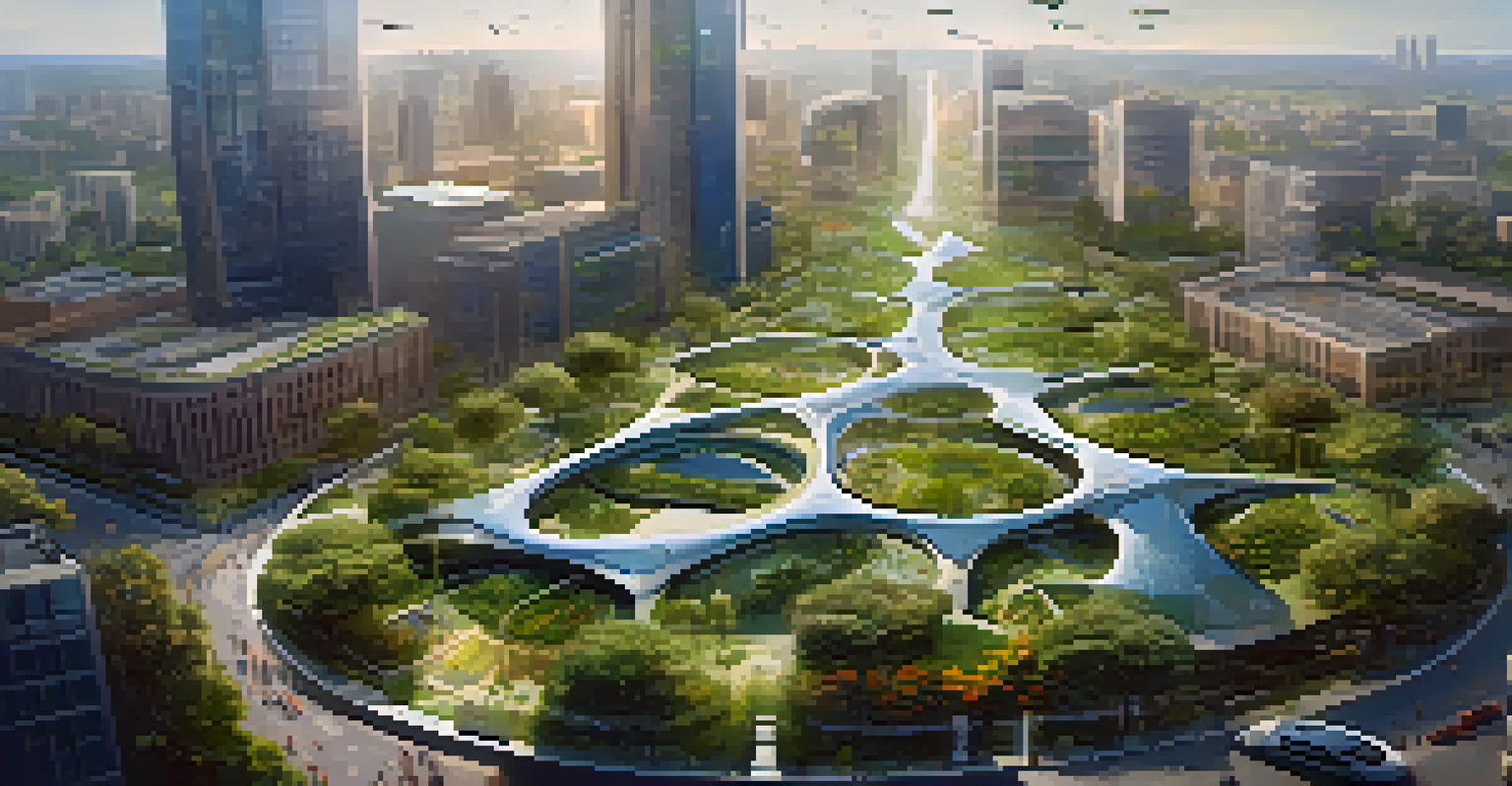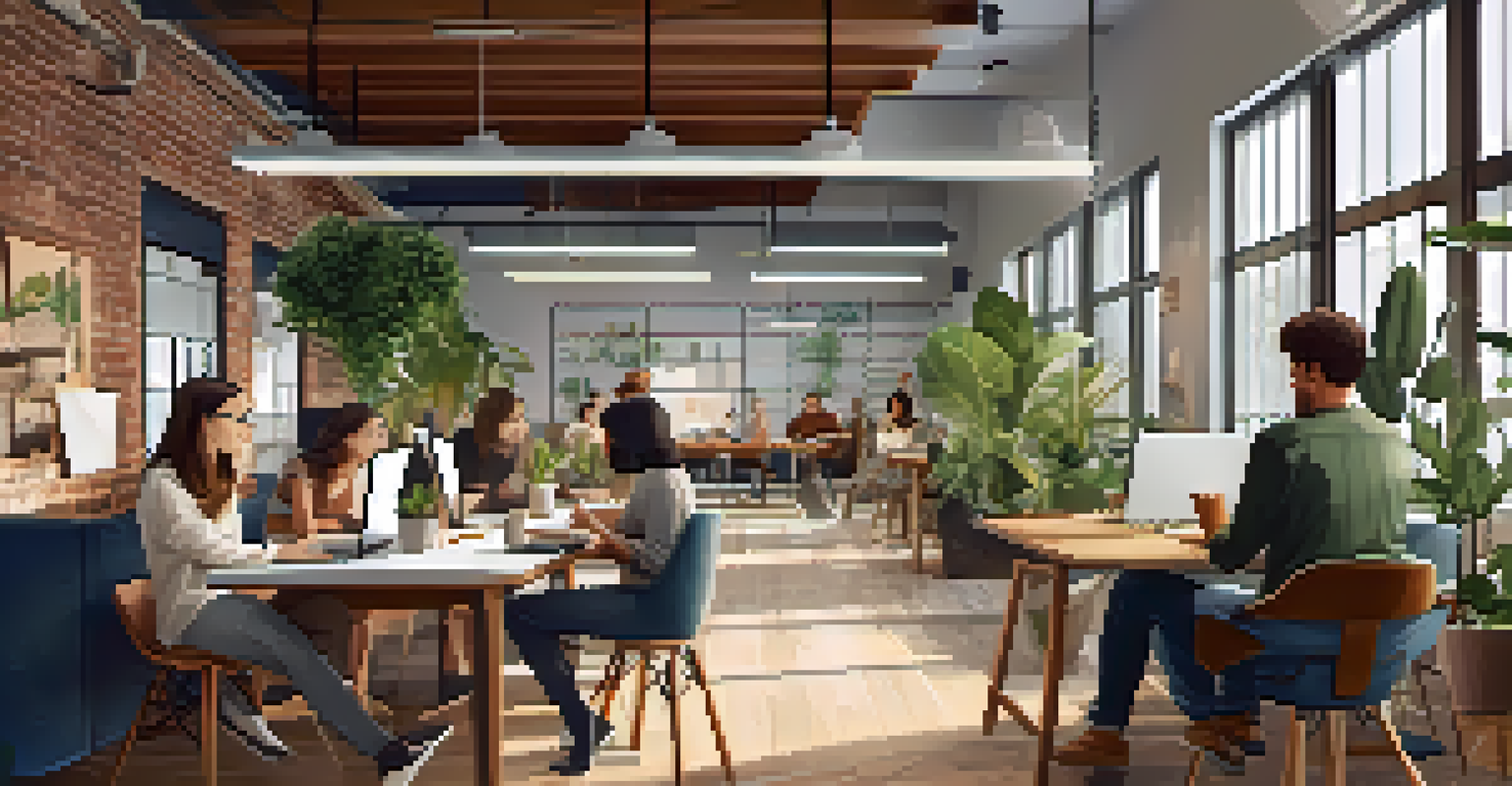Urban Living and Technology: A Future Perspective

The Rise of Smart Cities in Urban Environments
Smart cities are becoming a buzzword in urban development, and for good reason. These cities leverage technology to enhance the quality of life for residents, from traffic management to public safety. Imagine a place where sensors monitor everything from air quality to energy consumption, creating a healthier living space.
The best way to predict the future is to invent it.
For instance, cities like Barcelona have implemented smart waste management systems that optimize collection routes, reducing emissions and operational costs. This kind of innovation not only makes urban living more efficient but also helps create a more sustainable environment. As urban areas continue to grow, the adoption of smart technology will become increasingly vital.
Moreover, the integration of such technologies offers residents a chance to engage more actively with their environment. This connection fosters a sense of community, as people can contribute to local decision-making processes through apps and platforms designed for civic engagement.
The Role of IoT in Enhancing Urban Living
The Internet of Things (IoT) is revolutionizing how we interact with our urban spaces. By connecting everyday objects to the internet, IoT enables real-time data collection and analysis, leading to smarter resource management. For example, smart thermostats can learn a household's heating preferences, optimizing energy use and lowering bills.

Cities are also utilizing IoT for public transportation systems. With real-time tracking, commuters can receive updates on bus and train schedules directly to their smartphones, reducing wait times and improving overall efficiency. This technology makes urban commuting not just more convenient but also more reliable.
Smart Cities Enhance Urban Living
Smart cities use technology to improve quality of life through efficient resource management and community engagement.
As IoT continues to evolve, its impact on urban living will only grow. Imagine a future where your home, car, and city infrastructure communicate seamlessly, creating a cohesive living experience that adapts to your needs and preferences.
Urban Mobility: The Future of Transportation
Transportation in urban areas is undergoing a massive transformation, primarily driven by technology. The rise of ride-sharing services and electric scooters has changed how we think about getting from point A to point B. These options provide flexible and eco-friendly alternatives to traditional car ownership, which can be cumbersome in crowded cities.
Technology is best when it brings people together.
Additionally, the development of autonomous vehicles holds great promise for urban transportation. Imagine self-driving cars that can communicate with traffic lights to minimize delays and improve safety. Such innovations could reduce congestion and make cities more navigable, allowing residents to spend less time in traffic and more time enjoying their lives.
As cities continue to adapt to these changes, it’s essential for urban planners to consider how technology can further enhance mobility. By investing in infrastructure that supports these new modes of transport, cities can create a more interconnected and efficient urban environment.
Sustainable Living: Technology’s Impact on the Environment
With climate change posing a significant threat, urban areas must prioritize sustainable living. Technology plays a crucial role in this endeavor by providing tools that help reduce our carbon footprint. For instance, smart grids can optimize energy use by distributing electricity more efficiently and incorporating renewable sources.
Cities are also exploring green building technologies that enhance energy efficiency in homes and offices. By using materials that reduce heat absorption and incorporating solar panels, urban buildings can significantly decrease their energy consumption. This shift not only benefits the environment but also leads to cost savings for residents and businesses alike.
IoT Revolutionizes Urban Mobility
The Internet of Things (IoT) connects urban infrastructure, making transportation more efficient and reliable for residents.
Moreover, technology enables residents to track their energy usage and make informed decisions about consumption. With apps that monitor water and electricity usage, individuals can identify ways to reduce waste and promote a more sustainable lifestyle within their communities.
Enhancing Community Engagement Through Technology
Technology has the power to bring communities together, fostering engagement and collaboration in urban living. With social media and dedicated platforms, residents can easily connect, share ideas, and organize local events. This sense of connectivity strengthens community bonds and encourages residents to take an active role in local governance.
For example, neighborhood apps allow residents to report issues such as potholes or broken streetlights, ensuring that local authorities address these problems more efficiently. This two-way communication not only empowers citizens but also helps create a more responsive urban environment.
As technology continues to evolve, the potential for community engagement will expand. Virtual town halls and forums can bridge the gap between residents and local leaders, fostering a culture of transparency and collaboration that benefits everyone.
The Intersection of Urban Living and Remote Work
The rise of remote work has reshaped urban living, allowing people to choose where they live based on lifestyle preferences rather than proximity to the office. As more companies adopt flexible work policies, urban areas must adapt to accommodate this evolving workforce. Co-working spaces are popping up in neighborhoods, providing a blend of home comforts and professional environments.
This shift has also led to an increased demand for improved internet connectivity and digital infrastructure. Cities are investing in high-speed internet access to ensure all residents can work remotely without disruptions. This transformation opens up opportunities for economic growth and innovation in urban settings.
Technology Drives Sustainable Practices
Innovative technologies help cities implement sustainable living solutions, reducing carbon footprints and promoting eco-friendly practices.
Moreover, the blending of work and home life can enhance the quality of life for urban dwellers. With the option to work from anywhere, individuals can prioritize their well-being, leading to happier, healthier communities.
Addressing Urban Challenges with Innovative Solutions
Urban living comes with its unique set of challenges, from housing shortages to traffic congestion. However, technology offers innovative solutions to tackle these issues head-on. For instance, 3D printing is being used to construct affordable housing, providing a rapid response to housing crises in many cities.
Additionally, predictive analytics can help city planners make informed decisions about infrastructure development. By analyzing data trends, urban planners can identify areas that need improvement, ensuring resources are allocated efficiently. This proactive approach can lead to more sustainable and equitable urban environments.

As cities embrace these innovative solutions, residents will benefit from improved living conditions and enhanced access to essential services. The future of urban living lies in our ability to leverage technology to create smarter, more resilient cities.